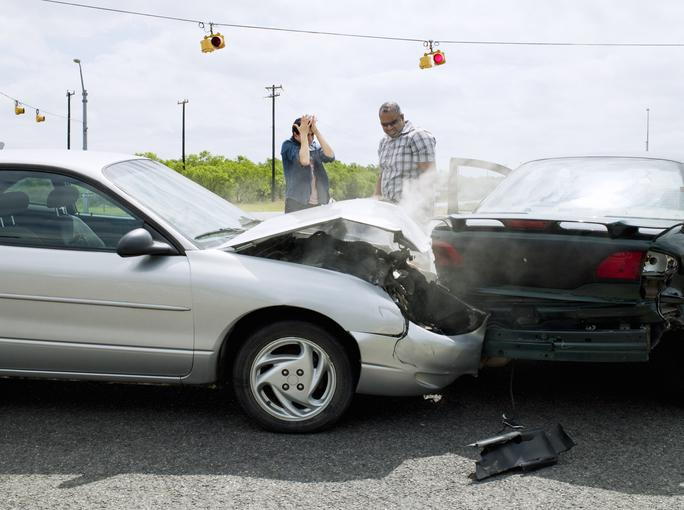
- posted: Mar. 15, 2024
- Auto Accidents, Personal injury
A T-bone collision, also known as a broadside collision, occurs when the front of one vehicle slams into the side of another, with the wreckage forming a T-shape. These accidents can be particularly dangerous since cars usually have a weaker side structure compared to the front, and the driver or a passenger in the impacted vehicle has little protection. Determining fault after a T-bone collision in Texas dictates who is financially responsible for the damages.
T-bone collisions can occur in a number of ways, but they usually happen at intersections, at driveways or when one car is making a left turn with traffic approaching from the other direction.
Texas operates under a modified comparative negligence system. This means that in an accident where both drivers share blame, the percentage of fault assigned to each party determines their liability for damages. Here's how it works:
Investigating the cause — Following the accident, a thorough investigation is conducted. Attorneys and insurance representatives examine the scene, gather witness statements and analyze the forensic evidence. The damage to each vehicle, skid marks and debris patterns can provide valuable information.
Right of way — Drivers must yield to those with the right of way, typically indicated by traffic signals, stop signs or lane markings. Running a red light, failing to yield at a stop sign, or making an improper turn can assign significant fault to a driver.
Duty of care — Both drivers have a legal obligation to act with reasonable caution to avoid accidents. Distracted driving, speeding, driving under the influence, or ignoring traffic signals can contribute to assigned fault.
Here are examples of how fault can be assigned:
Driver A runs a red light and collides with Driver B, who was speeding but had the right of way. Here, Driver A would likely be assigned a higher percentage of fault, but Driver B might still share some blame for exceeding the speed limit.
Driver A attempts a left turn at an intersection but misjudges the oncoming traffic, colliding with Driver B who was proceeding straight with the green light. In this scenario, Driver A might be primarily at fault for failing to yield, but Driver B could share some blame if their speed was excessive.
Note that under the modified comparative fault rule, an injured party who is found to be more than 50 percent at fault for the accident is barred from recovering any damages from the other driver.
If you've been involved in such an accident, particularly if you sustained injuries, an experienced Texas motor vehicle accident attorney can investigate the crash, gather evidence, negotiate with insurance companies and ensure your rights are protected under Texas' comparative negligence laws.
At Hope & Causey, P.C. in Conroe, Texas, we serve individuals and families in Montgomery County, San Antonio, Houston and beyond. For a free initial consultation, please call 936-441-4673 or contact us online.


